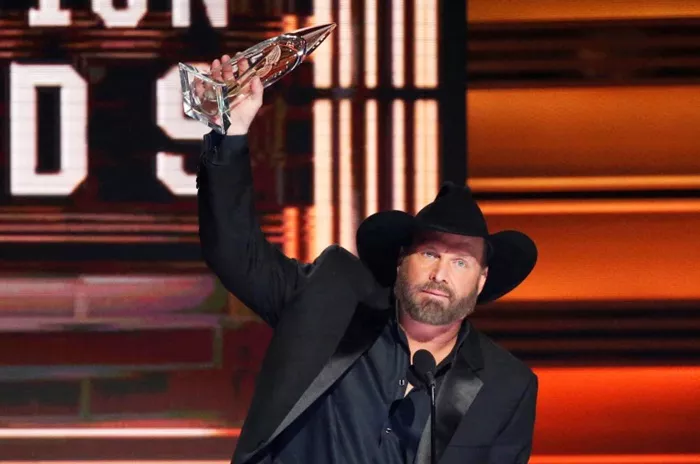Country music’s journey to mainstream success is a fascinating narrative shaped by various influences. Emerging in the early 20th century, the genre steadily gained traction, but it wasn’t until the 1990s that it truly exploded into the national spotlight. Key elements contributed to this transformation, including the rise of crossover artists, the impact of music videos, and the expansion of country radio. Major events like music festivals and award shows further solidified country music’s place in popular culture. This article explores the pivotal moments and figures that helped propel country music into the mainstream consciousness.
I. The Rise of Garth Brooks
A New Era of Superstardom
Garth Brooks emerged as a dominant force in the 1990s. His innovative approach to music changed the industry. Brooks blended rock elements with traditional country sounds. This crossover appeal attracted a broader audience. His album sales skyrocketed, making him one of the best-selling artists of all time.
Impact of Live Performances
Brooks’ energetic live performances set him apart. He incorporated theatrical elements into his shows. This approach drew fans from diverse backgrounds. His concerts became major events, further promoting country music to mainstream audiences.
II. The Influence of Music Videos
The Power of CMT and MTV
The rise of music videos in the 1990s significantly impacted country music. Country Music Television (CMT) launched in 1983, but it gained prominence in the 90s. Music videos allowed artists to showcase their stories visually. This format helped connect with fans on a deeper level.
Notable Music Videos
Artists like Shania Twain and Alan Jackson released iconic videos. Twain’s “Any Man of Mine” featured a catchy tune and relatable themes. Jackson’s “Chattahoochee” showcased southern culture. These visuals made country music appealing to a younger audience.
III. The Impact of Crossover Artists
Shania Twain’s Success
Shania Twain became a breakout star in the 90s. Her album “Come On Over” became the best-selling studio album by a female artist. Twain’s ability to blend country with pop elements expanded her fan base. She brought a fresh sound to the genre and opened doors for other crossover artists.
Other Crossover Successes
Artists like Alan Jackson and Faith Hill also found mainstream success. Their music incorporated pop and rock influences. This crossover approach made country music accessible to a wider audience. The blending of genres was crucial for attracting new fans.
IV. The Role of Radio and Chart Success
Country Radio’s Expansion
The 1990s saw significant growth in country radio stations. Formats expanded to include more contemporary country music. This shift allowed for greater diversity in song choices. As a result, new artists gained exposure and airplay.
Chart Success
The Billboard charts reflected the genre’s popularity. Country songs began to dominate mainstream charts. Garth Brooks, Shania Twain, and others frequently topped the charts. This visibility reinforced country music’s place in popular culture.
V. The Emergence of Country Festivals
Growth of Major Festivals
The 1990s saw the rise of major country music festivals. Events like the CMA Music Festival attracted large crowds. These festivals provided a platform for established and emerging artists. They celebrated the genre and brought together fans from various backgrounds.
Cultural Impact
These festivals helped solidify country music’s mainstream status. They promoted a sense of community among fans. The shared experiences at these events fostered loyalty to the genre.
VI. The Influence of Country Music Awards
The CMA and ACM Awards
The Country Music Association (CMA) and Academy of Country Music (ACM) Awards gained prominence. These award shows celebrated country music’s best and brightest. They provided significant exposure for winners and nominees.
Impact on Artists’ Careers
Winning or being nominated for an award elevated artists’ careers. Recognition at these events helped many break into mainstream success. The awards validated country music as a serious genre.
VII. The Shift in Themes and Lyrics
Relatable Themes
In the 90s, country music embraced relatable themes. Songs addressed love, heartbreak, and everyday life. This connection resonated with a broad audience. Artists told stories that felt familiar to listeners.
Social Issues in Lyrics
Some artists also tackled social issues. Songs addressed topics like family values and personal struggles. This added depth to the genre and broadened its appeal. Fans appreciated the honesty in these lyrics.
VIII. The Role of Technology
The Impact of the Internet
The 1990s saw the rise of the internet. This new technology changed how music was consumed. Artists could connect with fans through websites and early social media. The internet allowed for greater distribution of music.
Changing Distribution Methods
With the advent of digital music, country artists reached wider audiences. Online sales and downloads became important. This change allowed emerging artists to gain traction without traditional label support.
See Also: What Type of Music Is “Country Roads”?
IX. Conclusion
In conclusion, the rise of country music to mainstream prominence was driven by a perfect storm of factors throughout the decades. The 1990s served as a pivotal turning point, with influential artists like Garth Brooks and Shania Twain reshaping the genre’s sound and reach. The advent of music videos, the expansion of radio, and the popularity of country music festivals all played crucial roles in this evolution. As country music continues to adapt and thrive, its journey reflects broader cultural shifts, ensuring its lasting impact on the music landscape and its appeal to audiences worldwide.
Related Topics
Fully Exploring the Life and Impact of Tyler Hubbard: Things to Know
Top 6 Legendary Outlaws Bands of All the Time
12 Featured Country Road Trip Radio Stations: The Ultimate Guide

